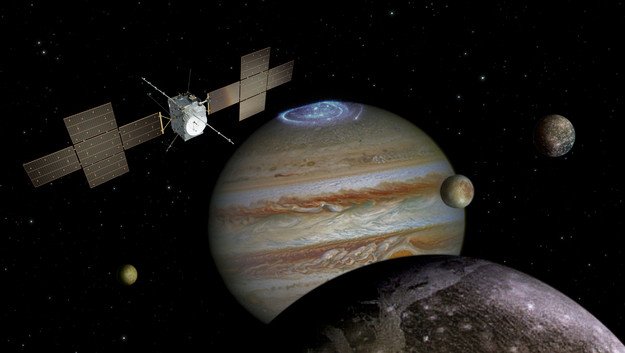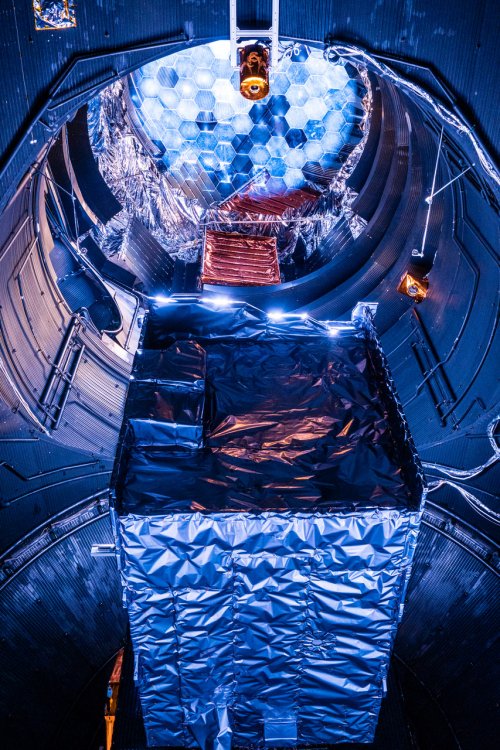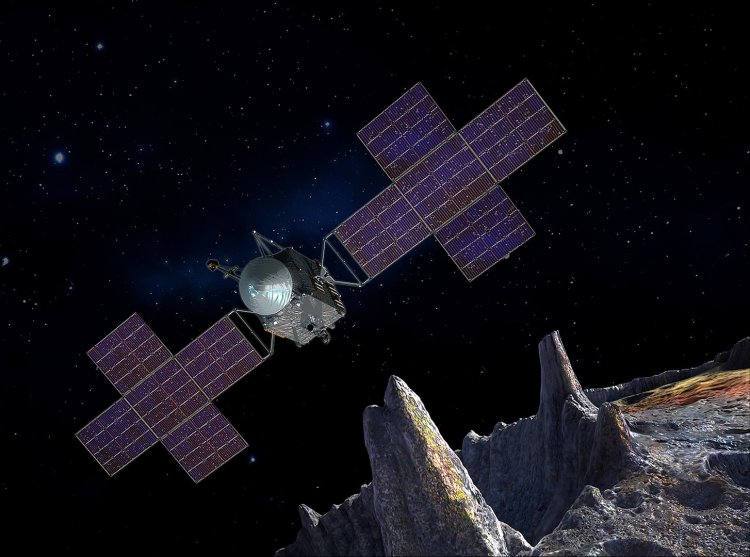Space is getting closer—this is the phrase, which becomes commonplace with each passing year. 62 years after the first human space flight, there are more and more private space companies in the world inspired by Space X’s success, while scientists seek to expand space horizons and aim higher than ever. In 2023, the mankind will head for Jupiter icy moons, learn a lot of new things about the composition of the soil from asteroid Bennu and watch the long-awaited launch of the Luna 25 lander mission. Our article about new space frontiers on the International Day of Aviation and Cosmonautics will cover this and more.
Jupiter Icy Moons
In 2023, we expect an event of a truly global scale, as the European Space Agency (ESA) will launch JUICE (Jupiter Icy Moons Explorer), the most challenging and expensive interplanetary project in history. The JUICE mission will allow scientists to explore three largest Jupiter icy moons—Europa, Ganymede, and Callisto. According to scientists, beneath the surface of the gas giant moons are oceans of liquid water. The spacecraft will assess the potential suitability of these worlds for humans and undertake the first-ever lunar and terrestrial gravity assist maneuver.
It is apparent that the Jupiter mission is a challenging project (and not the quickest one to complete). If all goes according to plan, JUICE will reach its destination in eight years. To send a spacecraft with a mass exceeding 6 tons in the right direction and with the right acceleration, we will need several gravity assist maneuvers. First, the spacecraft will use the Moon’s gravity and then the Earth’s gravity. In 2025, that is in two years after the launch, the spacecraft will fly by Venus. According to the plan, the spacecraft will undertake the second gravity assist maneuver in the vicinity of Earth in 2026 and another one again near Venus in 2029. That done, JUICE will finally gain the required velocity and head for Jupiter, which it will reach only in 2031.
But such a long journey is totally worth it, as the spacecraft will conduct two flybys of Europa, 12 flybys of Callisto, and 12 flybys of Ganymede. These will allow scientists to finally look beneath the icy veil of Jupiter moons in search for water and potential life.
Roscosmos CORONA and Luna 25
The Russian Space Agency plans to develop a reusable launch vehicle. Today, such vehicles have become a real trend in the world of space corporations seeking to make crew and spacecraft launches as cheap as possible. But Russian rocket scientists have gone beyond. According to the designers, the new rocket will be able not only to deliver payloads to orbit, but also to return payloads of a comparable mass.
Another anticipated event is Russia’s return to the Moon. Last year, the launch of the Luna 25 lander was unfortunately postponed. But scientists made the right decision to take time and bring all systems to perfection for a successful soft lunar landing. Ahead is the first lunar landing near the lunar south pole.
Luna 25: six months before the launch. Source: Roscosmos TV YouTube channel
Metallic Psyche
The mysterious asteroid belt has an equally mysterious celestial body named Psyche. A mission of the same name to explore the “golden” asteroid is being prepared this very minute. And this nickname was given for a reason. Around $10 quintillion (10,000,000,000,000,000,000) is at stake. However, this is not the cost of the mission but the estimated value of Psyche that is composed entirely of iron and nickel. It is too early to speak about harvesting resources, of course, as the mankind does not yet have the ability to extract minerals in space. Psyche is of interest from the viewpoint of scientific research, in the first place. Scientists expect the asteroid to uncover the secrets not only of its origin, but also of the origin of the Solar System planets.
Artwork of the Psyche spacecraft near metallic asteroid Psyche. Author: Peter Rubin. Source: NASA / JPL-Caltech / Arizona State Univ. / Space Systems Loral / Wikipedia
According to theories, Psyche is a metallic core of a protoplanet or its fragment. In the early stages of the Solar System’s formation, the young Psyche could probably collide with a larger object with the collision leaving only the protoplanet core. What could be interesting about the metallic core, one would think? The thing is, our planet core, by various estimates, is also composed of nickel and iron. Therefore, Psyche explorations can help us refine our knowledge of the planet formation processes. But we won’t know it until the end of the decade. This mission will take three and a half years.
Asteroid Bennu Approaching Earth
Don’t be scared, not the entire asteroid but its soil samples, which the OSIRIS-RЕx probe capsule will deliver this September. Asteroid Bennu was discovered at the end of the last century and named after the mythological bird Bennu. It represents the soul of Osiris, an ancient Egyptian god (after whom the spacecraft was named). Bennu is being watched very closely because it is considered a potentially hazardous object approaching Earth. According to estimates, this will happen in the 22nd century.
The OSIRIS-REx probe is a near-perfect copy the Stardust spacecraft that successfully delivered some particles of the cometary matter from comet 81P/Wild (Wild 2) and of the interstellar dust to Earth in 2006. With a special robotic arm, the spacecraft took soil samples from the asteroid without an actual landing on the celestial body and placed them into a special capsule. According to the scientists’ estimates, Bennu could contain an organic matter present in the asteroid since the birth of the Solar System.
Sample collection by OSIRIS-REx from asteroid Bennu. Source: NASA’s Goddard Space Flight Center YouTube channel
In addition to the scientific goal, the researchers are trying to assess the threat the object poses for Earth. To that end, they will have to measure the so-called Yarkovsky effect. The effect was first discovered by Russian engineer Ivan Osipovich Yarkovsky in 1900. According to its definition, the effect describes a temperature difference between the side warmed by the Sun and the side in shadow, which affects the asteroid trajectory. If the effect’s impact on Bennu is confirmed, then we will have to take steps to protect our planet. Scientists propose certain measures to nudge it off its orbit with a special paint applied to its surface, which will probably increase the temperature difference and, consequently, alter its trajectory.
These are only a few landmark events in space exploration. With each passing year, the mankind tries to learn more of the universe around us. Japanese and Indian scientists also plan to carry out a lunar landing; China develops a cutting-edge space telescope; and private companies think about building a rocket with a 3D printer. Obviously, each of these projects makes the space much closer to us. Sooner rather than later the mankind will probably make its first step on Mars or get to see Jupiter and Saturn firsthand from an observation window.
Photos in the text and on the homepage: 123RF

























